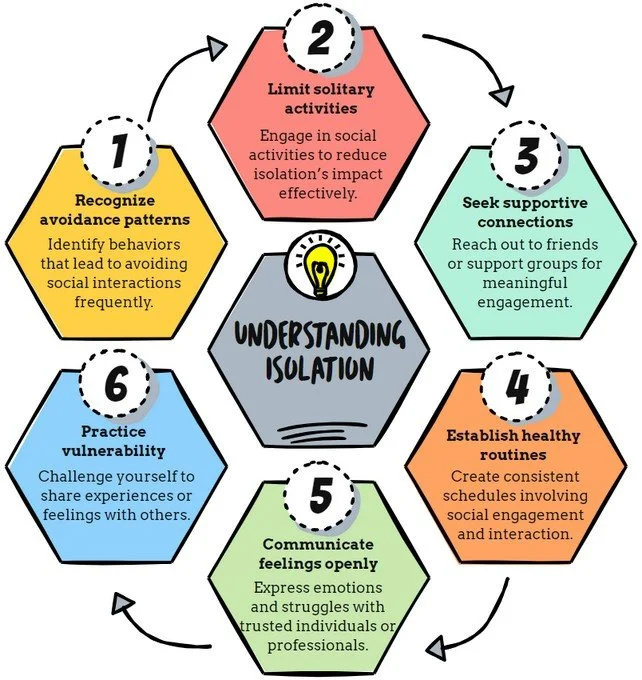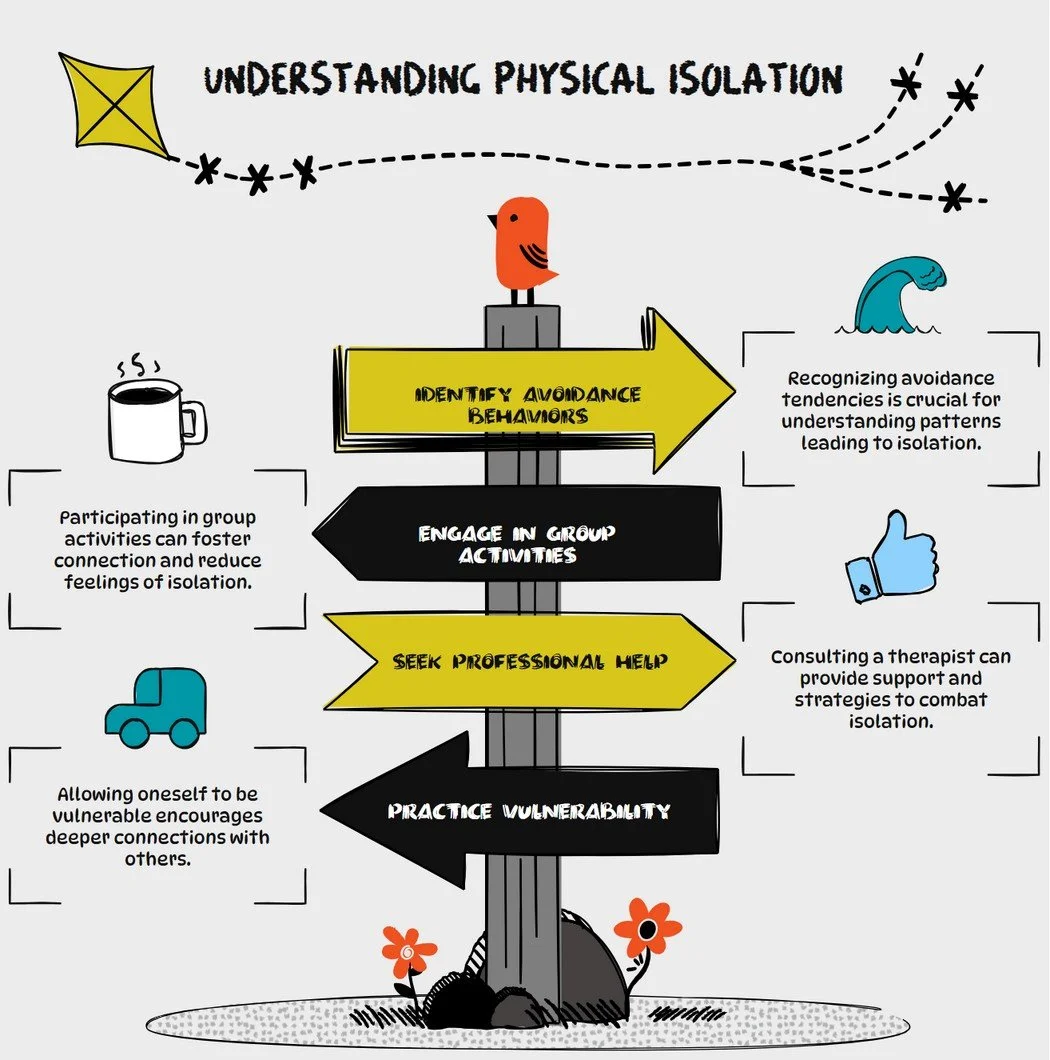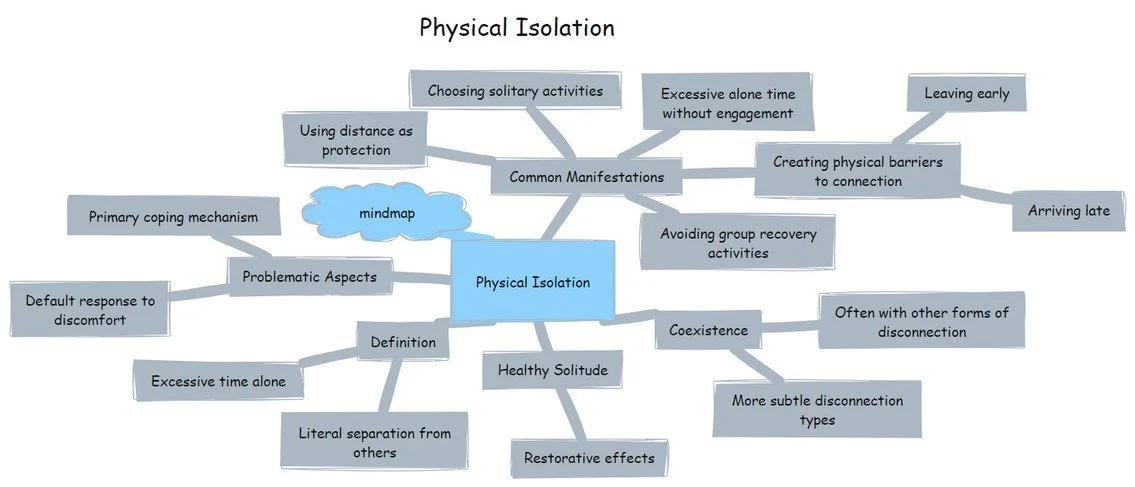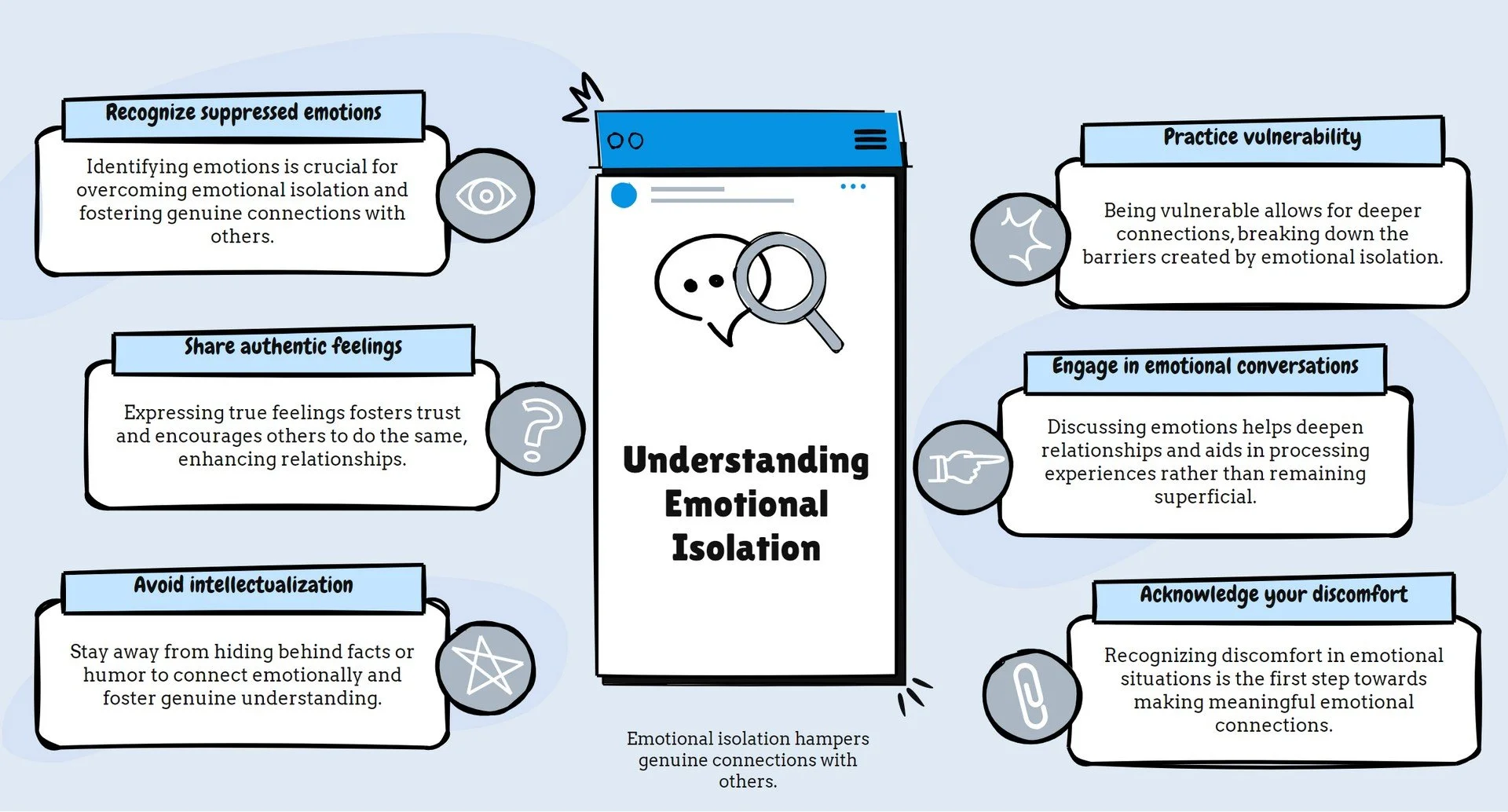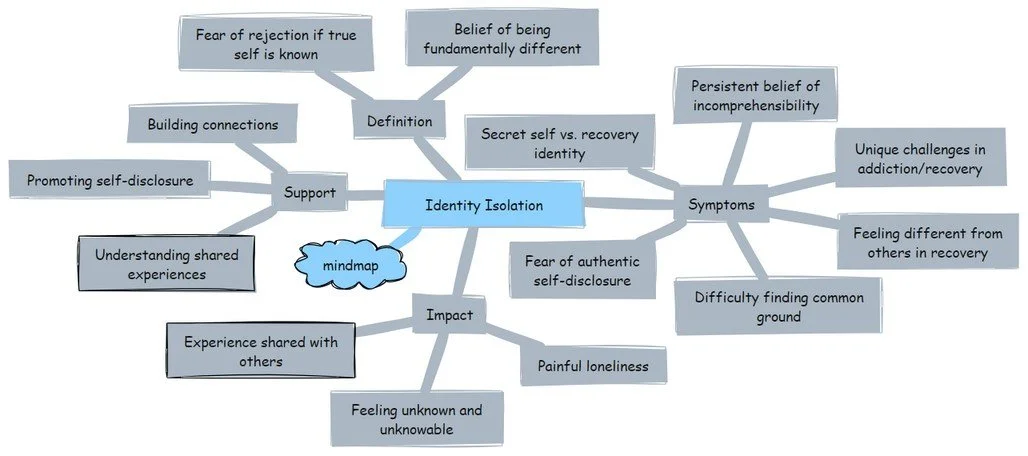
Understanding and Overcoming Isolation in Early Recovery
Beyond the Empty Room: Understanding and Overcoming Isolation in Early Recovery
Welcome to the beginning of your recovery journey. One of the most profound challenges you may face in early recovery isn't just staying sober, it's overcoming the profound sense of isolation that often accompanies addiction and persists even as you begin building a new life.
This workbook addresses the various forms of isolation that can undermine recovery, even when you're physically present in treatment programs, attending meetings, or surrounded by supportive people. Understanding these patterns of disconnection is crucial because, as many in long-term recovery have discovered, the opposite of addiction isn't just sobriety—it's connection.

Beyond the Empty Room: Overcoming Isolation in Recovery
Addiction thrives in isolation, and recovery flourishes in connection. Yet many people maintain invisible walls even while physically present in treatment programs, recovery meetings, or supportive environments. Understanding and addressing these subtle forms of disconnection can be the difference between simply staying sober and building a truly fulfilling life in recovery.
Four Dimensions of Isolation That Threaten Recovery
Physical Isolation: The Solitary Path
Beyond just being alone, physical isolation involves patterns of withdrawal, avoidance of recovery activities, and creating literal distance as protection against vulnerability. While easily spotted, this form often signals deeper disconnection.
Emotional Isolation: The Hidden Self
Present in body but absent in spirit, emotional isolation manifests as sharing facts without feelings, maintaining a "recovery persona," and using intellectualization to avoid vulnerability. Many appear connected while maintaining profound emotional distance.
Functional Isolation: Going Through the Motions
Checking boxes without engagement, this pattern involves following recovery suggestions mechanically without internalization. People "doing everything right" often receive minimal benefit when disconnected from the meaning behind recovery practices.
Identity Isolation: The Outsider Within
Perhaps most painful is the belief in "terminal uniqueness" – the conviction that you're fundamentally different from others in recovery. This creates profound loneliness even in supportive environments, as you believe your true self would be rejected if known.
The Path to Connection
Our research-based assessments and practical tools help you:
Identify your specific isolation patterns
Measure your current balance between isolation and connection
Develop targeted strategies for authentic engagement
Create personalized action plans for meaningful relationships
Track your progress from disconnection to belonging
Whether you're in early recovery or have maintained sobriety for years while feeling something essential is missing, addressing isolation can transform your recovery experience. The journey from isolation to connection isn't about eliminating all boundaries—it's about developing the capacity for authentic engagement that allows you to be truly known and supported.
Many discover that the opposite of addiction isn't just sobriety—it's connection. Take the first step beyond the empty room toward a recovery filled with meaningful relationships and authentic belonging.

The Four Dimensions of Isolation in Recovery
Research and clinical experience show that isolation in recovery manifests in four distinct but interconnected dimensions. You may experience one predominant form or a combination of several:
Physical
Emotional
Functional
Identity

Physical Isolation: The Solitary Path
Physical isolation involves literal separation from others and spending excessive time alone. While healthy solitude can be restorative, physical isolation becomes problematic when it's your default response to discomfort or primary way of coping with emotions.
You might be experiencing physical isolation if you:
Consistently avoid group recovery activities
Spend excessive time alone without meaningful engagement
Create physical barriers to connection (arriving late/leaving early)
Use physical distance as protection against vulnerability
Choose solitary activities over opportunities for connection
Physical isolation may be the easiest form to identify but often coexists with other, more subtle forms of disconnection. It directly removes the accountability, support, and modeling that recovery communities provide, creating vulnerability for relapse.
Emotional Isolation: The Hidden Self
Emotional isolation occurs when you withhold authentic feelings while maintaining surface interaction with others. You may be physically present but emotionally absent, creating a façade of connection without its genuine benefits.
You might be experiencing emotional isolation if you:
Share facts about recovery without revealing emotional experiences
Maintain a "recovery persona" that hides your authentic self
Struggle to name or express feelings in recovery contexts
Keep conversations at an intellectual rather than emotional level
Feel discomfort with others' emotional vulnerability
Use humor or intellectualization to deflect emotional connection
Emotional isolation can be particularly challenging to address because it often feels safer than the vulnerability required for authentic connection. It permits you to appear engaged while maintaining internal walls that prevent genuine healing.
Functional Isolation: Going Through the Motions
Functional isolation involves going through the motions of connection without genuine engagement. You may fulfill expected recovery activities while remaining fundamentally disconnected from their purpose and meaning.
You might be experiencing functional isolation if you:
"Check boxes" on recovery activities without meaningful participation
Physically attend meetings while mentally disengaged
Listen to others' shares without personal application
Follow recovery recommendations mechanically without internalization
Disconnect from the purpose behind recovery practices
Participate in recovery community without building genuine relationships
Functional isolation often stems from a desire to meet expectations while protecting yourself from the risks of authentic engagement. It creates a particularly deceptive form of disconnection because you may appear to be "doing everything right" while receiving minimal benefit.
Identity Isolation: The Outsider Within
Identity isolation involves the belief that your true self is fundamentally different and would be rejected if known. This "terminal uniqueness" creates a profound sense of separation even in supportive environments.
You might be experiencing identity isolation if you:
Persistently believe that others can't understand your experiences
Feel fundamentally different from others in recovery
Maintain a secret self separate from your recovery identity
Fear that authentic self-disclosure would lead to rejection
Believe your addiction or recovery journey is uniquely challenging
Have difficulty finding common ground with others in recovery
Identity isolation creates a particularly painful form of loneliness—feeling unknown and unknowable even while surrounded by others who share similar experiences. It maintains core shame and prevents the healing power of identification with others.


